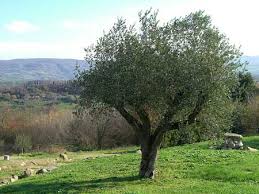Olive Leaf
(Olea europaea)
References for Olive Leaf pictures:
- Branch with Olives: https://baumsnaturalfoods.wordpress.com/tag/olive-leaf/
- Olive Tree: www.healthyfellow.com
About Olive Leaf: Olive leaf has been cultivated since prehistoric times (3500 BC in Crete) and loves Mediterranean climates. We eat the fruits and use the oil but one of the most common antioxidants that comes up for people using muscle testing is olive leaf in capsule form.
The olive branch is symbolic of peace. A crown of olive leaves was worn by victors in ancient Olympic games. Olive oil has been used for ritual anointing in some religious circles.
Historical Uses and Actions of Olive Leaf, Olive Oil and Olive Tincture:
- Abdominal swelling (meteorism)
- Abrasions (external) dry skin and hair
- Antiparasitic
- Antiviral
- Arthritis–rheumatoid and osteo
- Cystitis
- Dandruff
- Dentistry (delays settings of dental cement)
- Diabetes
- Digestive tract protection
- Dissolving ear wax (like dissolves like—before bed time, add a few drops of warmed olive oil into the ear canal then stop up the canal up with cotton—add heat from a flax bag or hot water bottle if it’s an ear ache. This is quite soothing. Some healers also add a drop of garlic oil or St. John’s Wort but I’ve never found this necessary.)
- Dry skin
- Ear infections
- Gallstone treatment (Olive oil mixed with lemon juice—see the Liver-Gallbladder flush)
- Increases circulation
- Increases kidney function
- Laxative
- Lice (maybe it smothers them?)
- Lowers blood pressure
- Massage
- Minor burns
- Minor feverish illnesses
- Nervous tension/Calming effect
- Peptic ulcers
- Stretch marks
- Sunscreen to protect against ultraviolet radiation
- Used as a carrier for essential oils
- Wound cleanser (ancient times)
Olive oil is added to liniments, ointments, skin and hair preparations and used for making soaps.
Parts of Olive Leaf Plant Used: Olive Leaves are collected and dried throughout the year for infusions, liquid extracts and tinctures or ground up into powder to encapsulate. Wild olive leaves are thought to contain higher concentrations of active principles. The fruit and oil of the olive varieties vary greatly in flavor depending on variety, time of harvest and processing techniques. Interestingly, the finest oil (called extra virgin) often comes from unpalatable varieties and is pressed without using heat or chemical solvents. Cold pressing results in less acidity and better flavor. The higher the acid content, the lower the quality of the oil (so the cheaper it is too). The fruit is picked unripe (green), semi-ripe (purple-mauve) or ripe (black). The olive is used in salads, spread, pasta sauces, tomato and eggplant dishes, pizza, breads, cooked dishes and mayonnaise.
Properties of Olive Leaf: Antiseptic, astringent, mildly diuretic, anti-inflammatory, antioxidant, nervine, antibacterial, antiviral, emollient
Chemical Constituents of Olive Leaf: Oleoropine, oleasterol, leine, oleic acid (75% of the oil)
Contraindications, safety issues, concerns, harmful drug interactions and allergy precautions for Olive Leaf: Olive oil and olive products are quite safe. Occasionally a client will have a delayed allergic reaction or contact dermatitis to olive products. Russian Olive tree pollen allergies are fairly common in my practice—these allergies respond well to Tree Mix II (ATREE2) homeopathic allersode made by Professional Complementary Health Formulations.
Other Notes for Olive Leaf: If you’re going to use Olive Leaf as a medicine, it’s best to get a standardized formulation. We use Nature’s Way brand (the purple label) but I also like Starwest Botanicals product which isn’t standardized but can be purchased in bulk or in capsule form.
Cultivation of the Olive Tree: An evergreen tree growing to the height of 30 feet, olives grow in well-drained soil in full sun. The bark is deeply grooved, gray in color and the branches contain small leathery leaves and clusters of small greenish white flowers. Olive trees are propagated by seed sown in the fall or with semi-ripe cuttings taken in the summer. Fruit is produced on one year old wood, so it’s effective to prune out old branches to encourage new growth. Diseases include scale, root nematodes and Verticillium wilt. Whitefly, thrips and spider mites are attracted to plants under cover. They are robust plants that are sometimes considered a weed in parts of Australia. Fruit is harvested in the fall and winter months. The pressed oil is stored in cool, dark conditions.
Helpful Links and References for Olive Leaf:
- Web MD and Olive products: https://www.webmd.com/vitamins-supplements/ingredientmono-233-OLIVE.aspx?activeIngredientId=233&activeIngredientName=OLIVE

